Recycling symbol: what does it mean?
Understand the history, meaning, importance and variations of the recycling symbol

Image: Colored emoji by Twemoji v2 project is licensed under CC BY 4.0
The recycling symbol, also known as the selective collection symbol, is one of the most recognized graphic symbols in the world and has helped to encourage global recycling, but not everyone knows where it came from.
It all started with the first Earth Day, in 1970, when the company Container Corporation of America, a major producer of recycled cardboard, sponsored a competition for art students and design to make them aware of environmental issues. 23-year-old college student Gary Anderson won the contest with the universal recycling symbol image.
The symbol that was elected and judged by designers recognized as world leaders in graphics and industrial art, including Saul Bass, Herbert Bayer, James Miho, Herbert Pinzke and Eliot Noyes, has not become a registered trademark, is in the public domain. has exclusive property rights and can be modified and used by anyone without payment of royalties.
What does the recycling symbol mean?
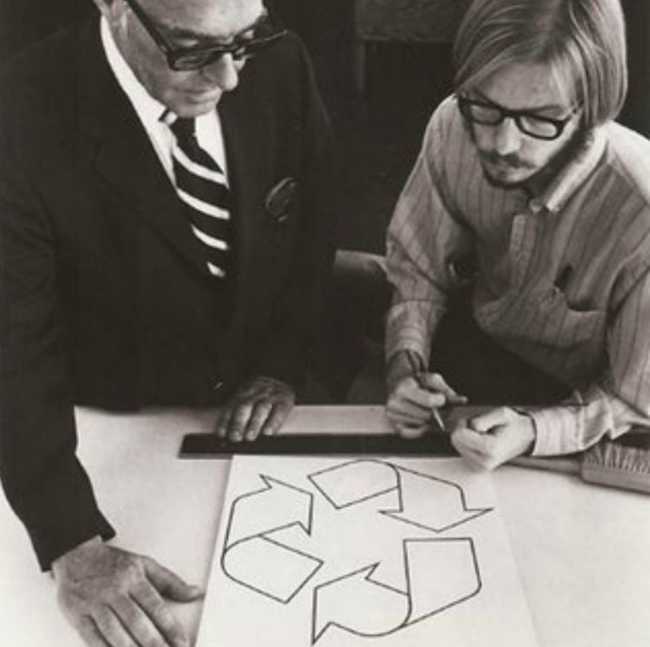
Image: unknown author
Gary Anderson's contribution to the design graphic with the recycling symbol came to be called one of the "icons of design most important in America".
Anderson drew a symbol and submitted three variations to the competition. The basic idea involving three flat black and white arrows that curve and retreat from each other rescues the topological figure from the Möbius ribbon; and brings the idea of infinity, a concept very close to the idea of recycling, which is the meaning of the symbol. But Gary Anderson was also inspired by psychedelic art, moderation and balance.
- Recycling: what is it and why is it important
Mobius Tape

David Benbennick, Mobius strip, CC BY-SA 3.0
The Möbius tape, which inspired the recycling symbol, is a one-sided surface and has the mathematical property of being unorientable. If, hypothetically, an ant starts walking on a Möbius tape, it will travel through the entire area infinitely without having to make detours. It is precisely this "endless cycle" property of the Möbius ribbon that inspires the meaning of the recycling symbol. It (the Möbius tape) was independently discovered by German mathematicians August Ferdinand Möbius and Johann Benedict Listing in 1858 and is widely used as a conveyor belt in printers, resistors, superconductors and atomic scale technology. Get a better understanding of how the Möbius strip works in the video:
Recycling Symbol Types
There are numerous variants of the recycling symbol in the world. But most variants of the selective collection symbol used have all the arrows bending back on themselves, producing a Möbius ribbon with three half twists.
O American Paper Institute promoted four different variants of the recycling symbol for different purposes. The simple black and white recycling symbol should be used to indicate that a product is recyclable. The other two variants feature a circled recycling symbol - white on black or black on white - and are used to represent products made from recycled materials, with the white-on-black version to indicate 100% recycled fiber and the black and white version. white for products that partially contain recycled fibres.
In 1988, the American Society of the Plastics Industry (SPI) developed a numeral identification code that is used to indicate the predominant type of material used in manufacturing the product or packaging. The function of the number, which ranges from one to 140, is to facilitate product identification and recycling. In the case of plastics, the identification number ranges from one to seven:
- Know the types of plastic
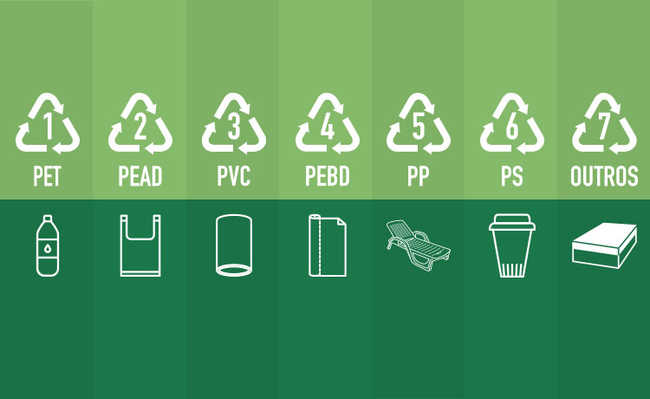
"Water Bottle" by Juan Manuel Corredor, "plastic bag" by Gilda Martini, "pipe" by Bakunetsu Kaito, "plastic cup" by Juraj Sedlák, "sponge" by Vittorio Maria Vecchi, "plastic wrap" by S. Salinas and " Plastic Deck Chairs Sun Beds" by Oleksandr Panasovskyi in the Noun Project
- PET or PETE polyethylene terephthalate)
- HDPE (High Density Polyethylene)
- PVC (Poly Vinyl Chloride or Vinyl Chloride)
- LDPE (Low Density Polyethylene)
- PP (Polypropylene)
- PS (Polystyrene)
- other plastics
In addition to the material type identification numbers used in the composition of the material, the American Society of the Plastics Industry (SPI) developed different recycling symbols that can be represented in unicode:
Universal recycling symbol (U + 2672 ♲)
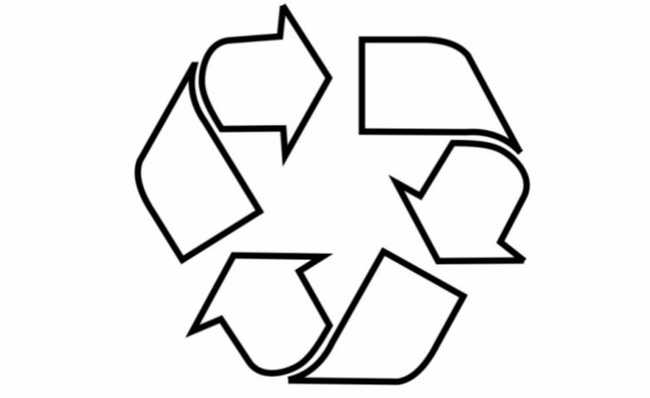
Generic recycling symbol (U + 267A ♺)

Universal recycling symbol in black color (U + 267B ♻)
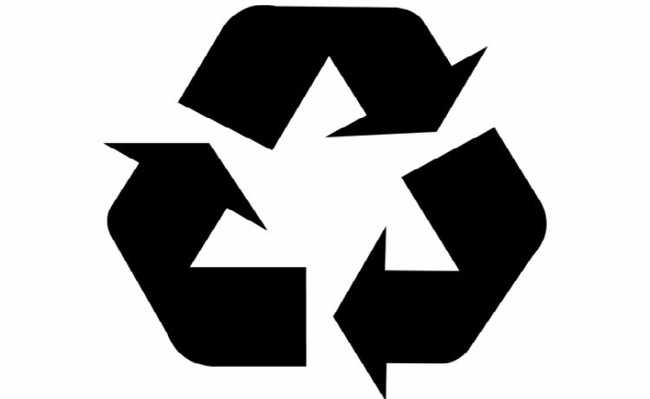
Symbol indicating that the product contains recycled paper (U + 267C ♼)
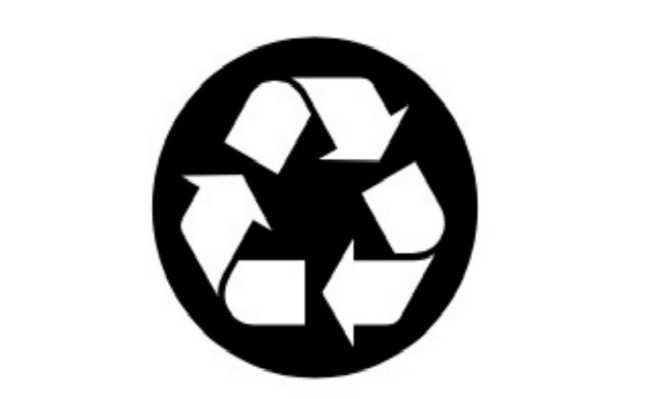
Symbol indicating that a part of the product contains recycled paper (U + 267D ♽)
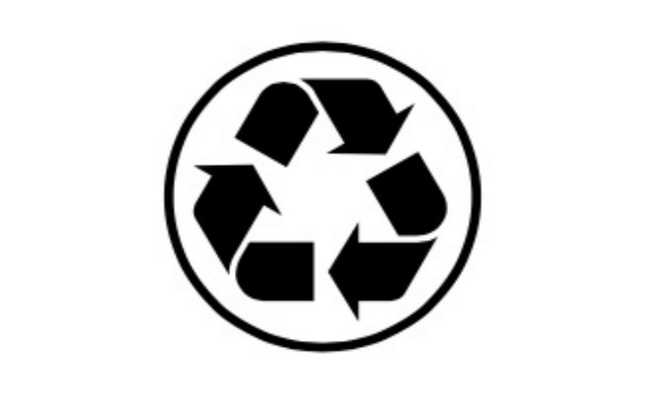
Symbol indicating that the paper is durable and/or that no acids were used in its manufacture (U + 267E ♾)
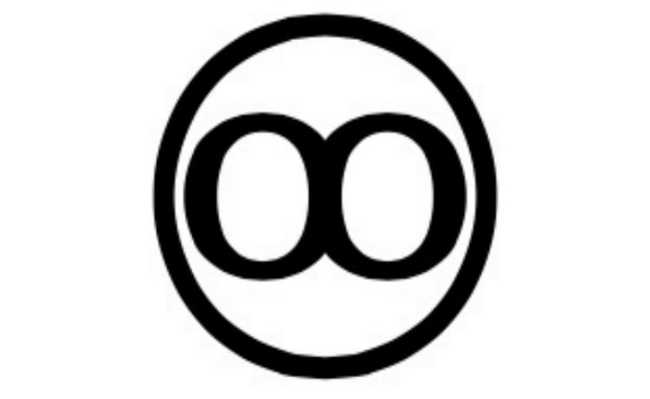
Importance of the recycling symbol
The symbol of recycling, or selective collection, is very important for the final destination of waste. This is because it facilitates the identification of waste, positively impacting its selection, handling, transport and treatment. After all, when we see the recycling symbol on packaging, we already know that they can be destined for selective collection. Learn more about this topic in the article: "What is selective collection?".
Ironic recycling symbol
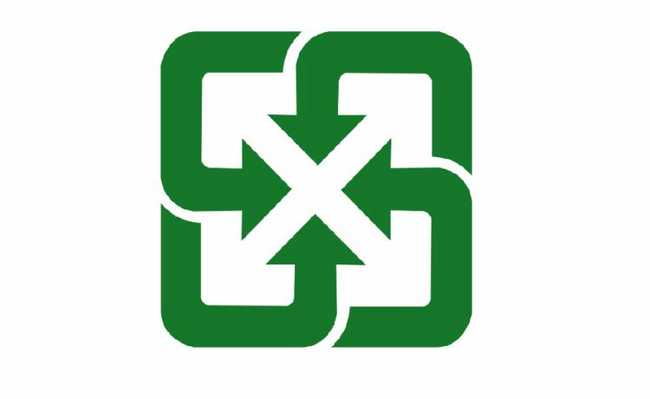
The ironic recycling symbol is a satirical version of the green recycling logo and first appeared in 1998 at an art installation in Bayonne, New Jersey. With arrows that, instead of indicating a circular movement connected to recycling, express a twisted movement in and out, indicating that in the creation of the product there was waste.










